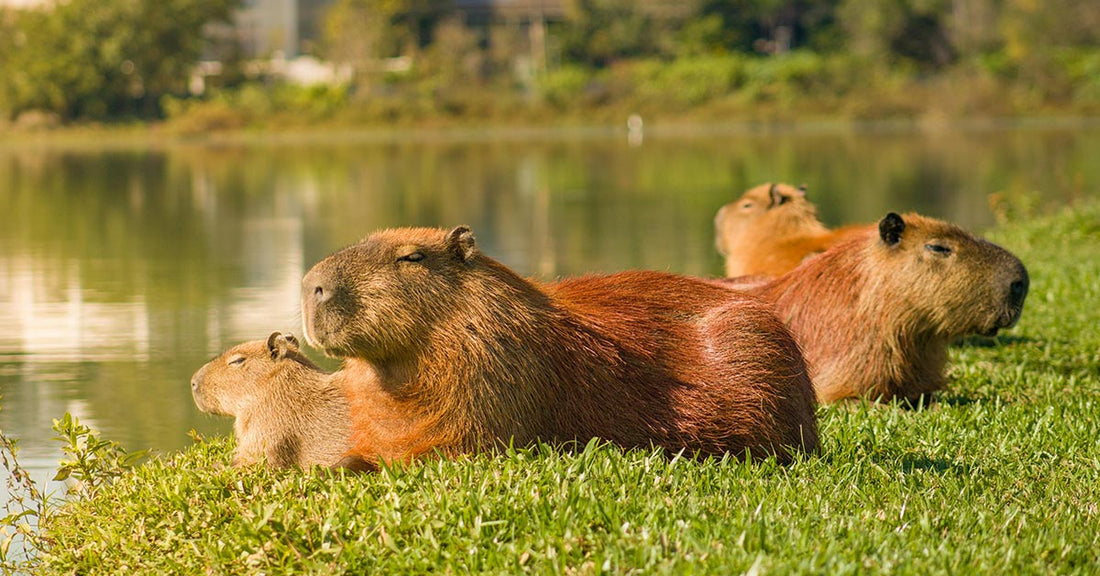Wildlife Fights Back as Capybaras Reclaim Their Native Habitat A Luxury Town Built on Wetlands
Matthew Russell
A few years ago, the upscale community of Nordelta, just outside Buenos Aires, Argentina, was known for its tranquil lagoons, designer homes, and manicured lawns. Today, it’s just as famous for the giant rodents lounging on those lawns—capybaras.
They aren’t new to the area. Capybaras, or *carpinchos*, are native to South America and once thrived in the wetlands Nordelta now occupies. Developers drained and reshaped that land starting in the late 1990s, building a 3,950-acre private enclave with golf courses, shopping centers, and luxury condos. But the animals returned, and in large numbers, reclaiming the space that was once theirs.
“It’s the other way around: Nordelta invaded the ecosystem of the carpinchos,” environmental lawyer Enrique Viale told Live Science.

Capybaras have taken over an exclusive Argentine suburb built on their native wetlands.
The Capybara Boom
In the early pandemic lockdowns of 2020, Nordelta’s human residents stayed indoors. Capybaras seized the moment. They grazed in abandoned parks, sunned themselves on tennis courts, and made themselves at home. Freed from predators like jaguars and pumas—long extinct in the area—the capybaras multiplied. According to biologists hired by the community, their population nearly tripled to around 1,000 animals in just two years, The New York Times reports.
But their growing numbers came with problems. Residents complained of gardens destroyed, dog attacks, and capybaras blocking traffic. “It’s a wild animal versus a domesticated dog,” said veterinarian Luciano Sampietro, hired to manage the situation. Some animals have even bitten pets, though they are not known to be aggressive toward people, according to Smithsonian Magazine.

The Nordelta community was constructed over once-thriving capybara habitat.
A Conflict Over Coexistence
Some locals pushed for drastic action. They wanted the capybaras removed, or at least fenced off. Others had more violent ideas. “Some locals have threatened to shoot the capybaras,” according to Live Science, though no animals have been killed.
But a growing number of Nordelta residents pushed back. Activists formed groups, staged protests, and launched social media campaigns. “Their lovability has conquered us, and we’re fighting for them,” Silvia Soto told The New York Times. Others saw the rodents as a symbol of class resistance—a reclaiming of nature from the wealthy few who paved over it. “In politically polarized Argentina, many joke that the animals are ‘the heroes of the working class,’” wrote South China Morning Post.

The capybaras, once nearly extinct locally, now number in the hundreds.
Managing the Takeover
Eventually, Nordelta’s management began exploring humane ways to manage the situation. They launched sterilization efforts using blow darts and contraceptive vaccines to curb reproduction. Improvac, a vaccine typically used in pigs, was administered to several capybaras—despite not being tested on the species before.
“They still mate,” biologist Costanza Falguera told The New York Times, “but they don’t fertilize.”
They also created designated habitats within the neighborhood by letting lawns grow wild in certain zones and building “buffer zones” with reeds and shrubs. These rewilded areas encouraged the capybaras to keep away from private gardens and helped reduce conflicts, according to TIME.
ut not all experts are convinced the plan is sustainable. Conservationist Sebastian di Martino, of the Rewilding Argentina Foundation, pointed to a larger issue. “It is caused by the alteration and degradation of ecosystems,” he told Smithsonian Magazine. “We’ve extinguished a ton of species that were their natural predators.” Without jaguars or pumas, capybaras have no reason to hide and can graze endlessly, degrading vegetation and weakening the carbon-capturing power of the land.

Without predators, the rodents freely graze and reproduce.
A Global Warning
What’s happening in Nordelta is not unique. Across the world, animals are adapting to urban environments after being pushed from natural ones. “We need to start thinking about cities as multi-species communities,” environmental historian Peter Alagona told TIME. He sees this as part of a broader “ecological rearrangement” driven by climate change, habitat loss, and urban sprawl.
From birds nesting on rooftops in London to jaguars wandering near towns in Brazil, the wild isn’t disappearing—it’s shifting.
Nordelta’s capybara story is a preview of that shift. It’s a messy, emotional, and deeply human lesson in what happens when we pave over nature—and then act surprised when it walks back into the yard.

